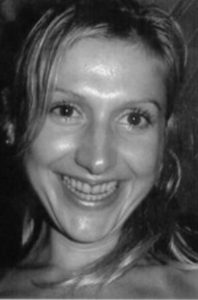Bulimia. It is my drug, my high, my addiction, my passion, my love, my desire. It has become me. At work I never ever threw up. Maybe one or two times when I worked at ICU. I tried not to do it, and I definitely tried not to do it at work.It was then, when I first took other employees’ food and ate it. Not much. But I did it. At Intermountain I started doing it once a shift.… I also began eating and taking the kids’ food. Also ordering extra trays and hiding the food for later. Also eating and hiding tons of food. Anything I could get my hands on.… I was taking meal tickets by the handfuls and using them for free meals in the cafeteria, so mostly I was taking from the hospital and honestly I didn’t feel bad about it. I felt like I was owed stuff from people and this world. If a patient [was] discharged [and went] home and things were left I would take it … stamps, phone cards, money. Then I started taking money from our petty cash. Any money I took was always for food—usually fast food. Then I was going to the cafeteria and stealing food. Just shoving tons of food into my scrubs’pockets. I couldn’t believe how easy it was. I would make three to four trips to the cafeteria in one shift. (August 2003)
—from Letters from Nursey, a future project edited by Laurel Leigh & Jen Haddad
Anorexia nervosa, the proclivity to starve oneself, damages the lives of millions of Americans, mainly females. Its corollary disorder, bulimia, characterized by uncontrollable binge eating and self-induced regurgitation among other starvation rituals, is linked to myriad physical complications including esophageal problems, stomach ulcers, organ damage and decreased bone density. Both disorders produce low rates of treatment success, experience high recidivism and are life threatening.
Somewhat less frequent and posing challenges for effective treatment modalities is the residence of the two disorders in one person. Letters from Nursey is a true account of my sister’s battle with anorexia and bulimia. Going to great lengths to hide her illnesses from others, Terri could be brutally honest in her journals, where she wrote about her daily struggles with a + b and the splintering effects the opposing disorders had on her psyche. A licensed nurse, she understood and feared the physical tolls; a slave to her mental illnesses, she took greater and greater risks to both conceal and satisfy her binging desires as well as the accompanying addictions to which they gave rise. Spanning thirteen years, with entries that are in turn shocking, heart breaking and at times hilarious, “Nursey” reveals what it is like to live with the “double whammy jammy.”
We believe hers is a story that must be told.
